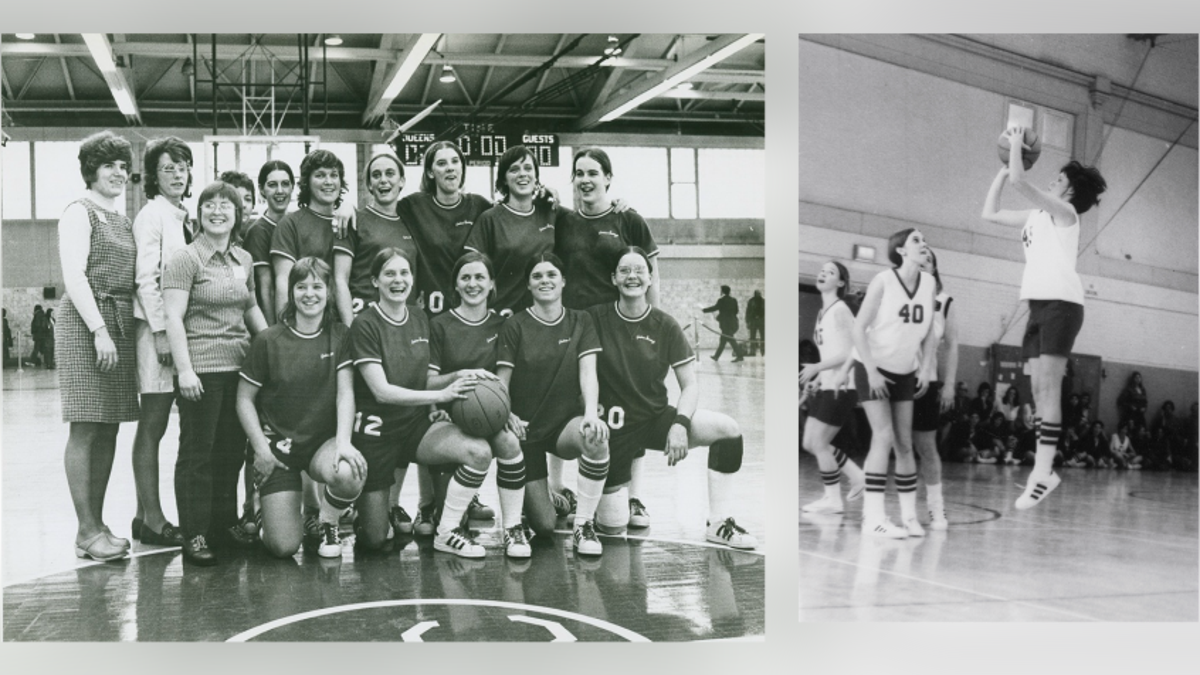The Department of Education should 'withdraw' and 'abandon entirely' proposed Title IX rewrite: Christina Kiefer
Experts weigh in on what happens with the unprecedented number of public comments submitted to the federal register on the Biden administration's Title IX rewrite.
I was one of the last victims of pre-Title IX discrimination.
Since sports were for "boys only" in the 1950s, I mastered my basketball skills on driveways against neighborhood boys. My elementary school teacher would drag me off the soccer or baseball field and tell me to go play hopscotch with the other girls because sports weren’t ladylike. But I was one of those girls for whom physical exercise and competition was just as important for my growth and maturity as academics.
In college, I played basketball at Indiana University from 1969-1973, plus softball and field hockey for two of those years. I was captain and leading scorer of the 1973 basketball team, leading my teammates to the Final Four in the Association for Intercollegiate Athletics for Women (precursor to the NCAA).
But in those days, women were not allowed to play in the same arena as men, and there were no female scholarships. At away games, women slept in sleeping bags while men slept in hotels. The local newspaper relegated coverage of our team to the "Women’s" section alongside engagement announcements and recipes: "Come out and watch the prettiest co-eds on campus go against the purse-carrying Purdue Boilermakers."
ANGELA MORABITO: BIDEN'S TITLE IX RULE COULD MEAN YOUR DAUGHTER'S COLLEGE ROOMMATE WILL BE A MAN
Then, it happened—June 23, 1972. I watched with stars in my eyes as Title IX opened a world of new opportunities for women in sports. In 1972, there were just 300,000 women in high school and college sports in the U.S. But by 2012, that number had risen ten-fold to more than 3 million women. Wonderfully, I’ve continued to watch this number increase throughout my adult life.
But now, 50 years after that iconic civil rights bill became law, female athletes are experiencing a different kind of injustice than what I faced. The root problem, however, remains the same: Women are being sidelined by men. Girls are losing opportunities and medals to boys.
Today, women’s sports face an eroding landscape where males are displacing females because government officials and public schools and universities are allowing males who identify as women to compete on women’s sports teams. It doesn’t help that the U.S. Department of Education is exceeding its authority by issuing new rules that essentially rewrite Title IX—and does so in a way that threatens the advancements women have achieved in education and athletics.
In Connecticut, former high school track athlete Chelsea Mitchell lost four state championships and two all-New England awards because she was forced to compete against male athletes. And cross-country runner Madison Kenyon experienced a similar story at Idaho State University when she was forced to compete repeatedly against a male athlete—and lost each and every race. And who could miss the University of Pennsylvania’s Lia Thomas crushing all the female competitors at the NCAA Women’s Swimming Championship 500-yard freestyle earlier this year?

Chelsea Chelsea Mitchell is a college sophomore and track athlete. She is represented by Alliance Defending Freedom. (ADF)
These stories are becoming more and more common as women share their own experiences and call out the unfairness of having to compete against men who are faster, stronger, and more muscular.
After graduating college, I coached the Muncie Northside High School volleyball team to two state championships. In those days, with Title IX so fresh, most high schools could not immediately fund and offer a multitude of girls’ sports teams, so a really good female tennis player, golfer, swimmer, or even softball player would be allowed to play on the boys’ team.
And conversely, because there weren’t any boys’ volleyball teams, some boys at another high school were allowed to join the girls’ volleyball team. That meant my girls had to compete against boys in a power sport—boys who were 6-feet, 3-inches, strong, and skilled who fiercely pounded the volleyball high above the girls’ net. I saw the impact it had on my girls and how they had to fight to stay in the game.
CLICK HERE TO GET THE OPINION NEWSLETTER
Today, brave young women are engaged in their own fight, much like I was. They’re finding their voices and standing up for fairness in women’s sports to protect a game they love.
Recently, I was proud to join several young female athletes in a friend-of-the-court brief that Alliance Defending Freedom attorneys filed with the U.S. Court of Appeals for the 7th Circuit in support of Indiana’s new law that protects athletic opportunities for girls.

Debbie Milbern Powers during her college years
Women of my age and older remember well a time before we had equal opportunities for scholarships, or even our own locker rooms.
Our work continues today in ensuring girls growing up in Indiana, and across the country, still have sports and educational opportunities. This includes girls like 10-year-old Addy, who e-mailed me saying that she "can’t imagine not getting to play on a basketball team in elementary school."

Debbie Milbern Powers and her husband Jim. Both are active marathon runners. (Debbie Milbern Powers)
CLICK HERE TO GET THE FOX NEWS APP
In this post-Title IX world, let’s ensure Addy and every other girl isn't discriminated against simply because they’re girls.
Let’s ensure girls can continue playing sports in elementary school and as far beyond as they want to go by protecting sex-specific sports teams.




